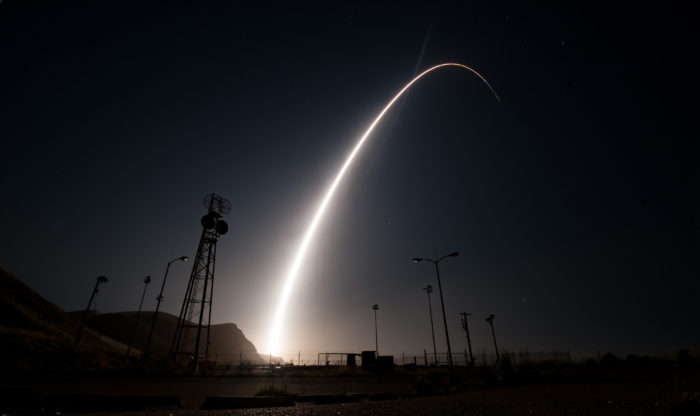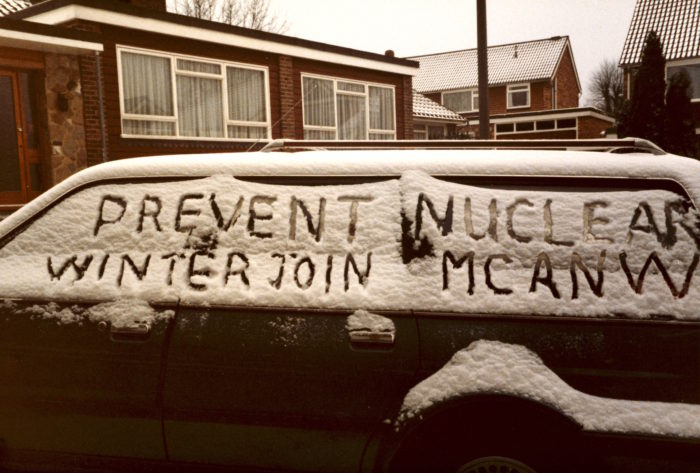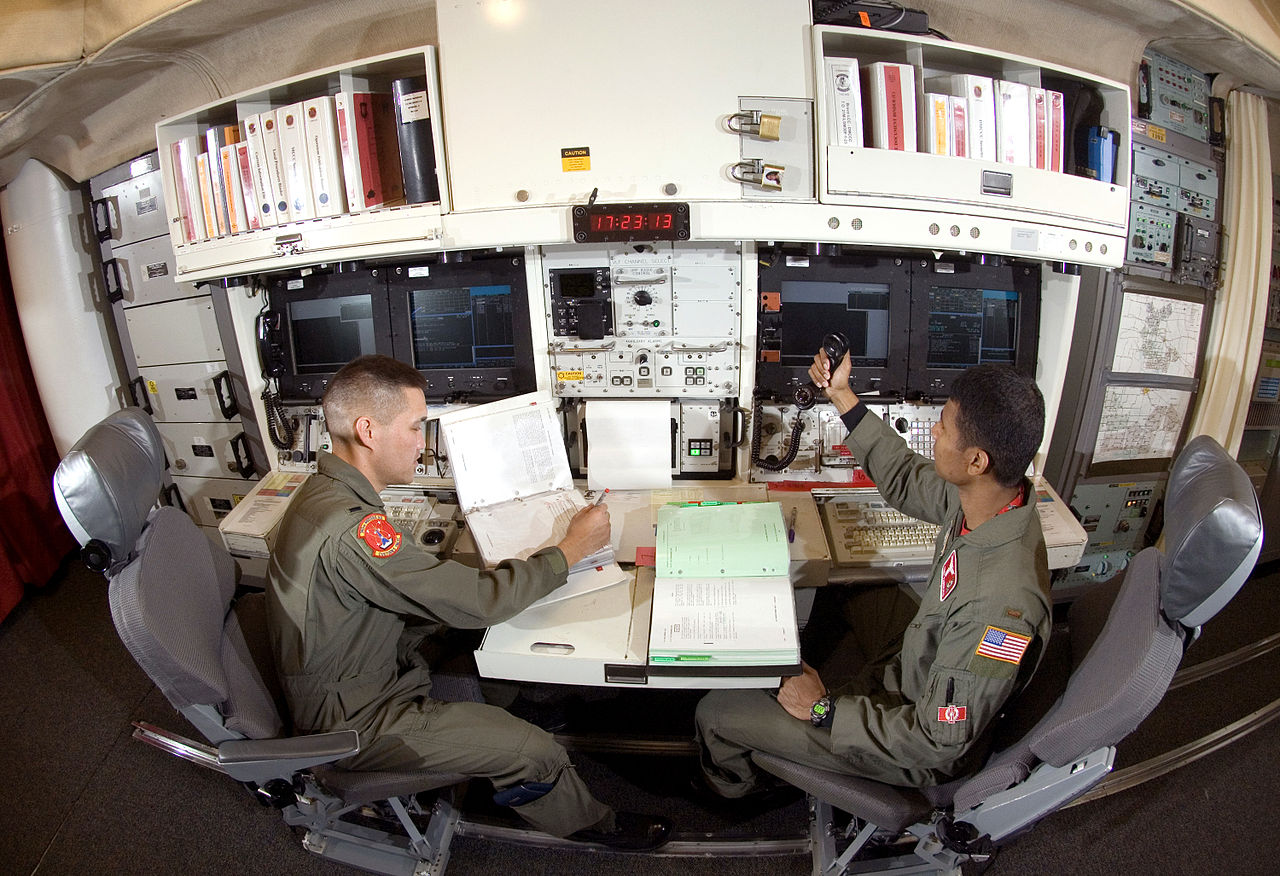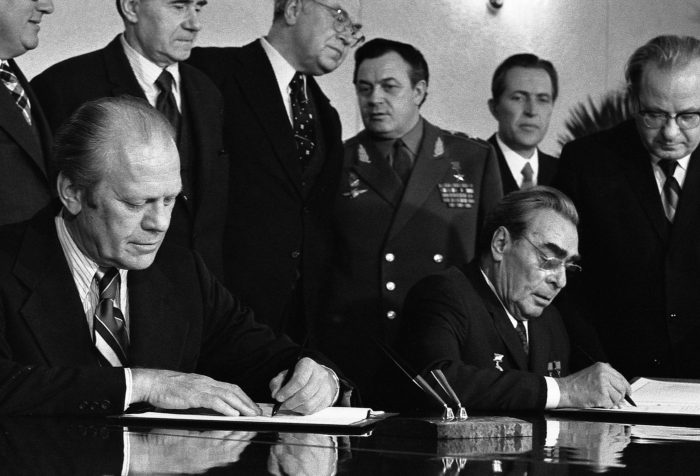Two Minutes To Midnight
Two Minutes To Midnight
Many youngsters think that nuclear
war is impossible because it is irrational. In fact, nuclear war is very
possible and, indeed, likely. In our present time Washington has recklessly
heightened tensions with Russia and China, and reaction times are so short that
they permit no time for clarification or reflection. Launched missiles, unlike
ships and airplanes, cannot be recalled.
John Walsh, Stephen Cohen, and
myself, like others of our age who experienced decades of the Cold War, are now
experiencing a far more dangerous resurrection of it. The older generation must
succeed in making the younger ones comprehend that the hurt that awaits mankind
will not be loosed by Democratic politicians in Virginia wearing blackface.
John Walsh’s review of Daniel Ellsberg’s book, Doomsday Machine, might assist
Americans in coming to grips with reality:https://consortiumnews.com/2019/02/05/dismantling-the-doomsday-machines/
Otherwise, we won’t be here much
longer.
Dismantling the Doomsday Machines
Dan Ellsberg has given us a book that shows the
urgency of re-engaging on nuclear disarmament, writes John V. Walsh.
With Two Minutes to Midnight, Time Is Running Out
“From a technical point of view, he [director Stanley
Kubrick] anticipated many things. … Since that time, little has changed,
honestly. The only difference is that modern weapons systems have become
more sophisticated, more complex. But this idea of a retaliatory strike
and the inability to manage these systems, yes, all of these things are
relevant today. It [controlling the weapons] will become even more
difficult and more dangerous.” — Russian President Vladimir Putin
commenting on the film, “Dr. Strangelove: or How I Learned to Stop Worrying and
Love the Bomb,” in an interview with Oliver Stone, May 11,
2016. Putin
had not seen the movie and did not know of it before Stone showed it to him.
The “Doomsday Machine,” the title of Daniel Ellsberg’s superb book, is not an imaginary contraption
from a movie masterpiece. A Doomsday Machine uncannily like the one
described in “Dr. Strangelove” exists right now. In fact, there are two
such machines, one in U.S. hands and one in Russia’s. The U.S. seeks to
hide its version, but Ellsberg has revealed that it has existed since the
1950s. Russia has quietly admitted that it has one, named it formally,
“Perimetr,” and also tagged it with a frighteningly apt nickname “Dead Hand.”
Because the U.S. and Russia are the only nations with Doomsday Machines to date
we shall restrict this discussion to them.
Daniel Ellsberg in 2010. (JD Lasika via
Flickr)
Ellsberg’s terrifying message in the book has failed
to provoke action in the year since its publication. Instead, on Jan. 24
the Bulletin of Atomic Scientists kept its Doomsday Clock at two minutes to midnight, poised perilously
close to Armageddon for a second year, marking a “new abnormal.”
The first component of a Doomsday Machine is a
mechanism of launching nuclear weapons with a command structure not always in
the hands of a president in either country, something carefully hidden from the
U.S. public.
The second component is a weapon of such destructive
force that it can kill billions at once and then more gradually the entire
human race and perhaps all animal life on earth.
Here is a brief consideration of Ellsberg’s views as a
reminder of the nuclear peril we face along with a plan of action that he and
others suggest.
Launch and Command
Russia and the U.S. each have the ability to strike
the other with great force, destroy the other’s cities and industrial and
military bases.
The essence of this first-strike capacity is the
ability to wipe out the deterrent of the other side or weaken it so that the
remaining force could be intercepted for the most part.
How can a targeted nation respond to such a
capability? It must convince the adversary that such a strike is futile
because it will not destroy the deterrent of the targeted nation. The
attacker must understand that the nuclear force of the targeted nation, its
nuclear deterrent, will survive, and the attacker will be annihilated.
The first approach to ensure this survivability is to
build ever more nuclear weapons. Thus, when the U.S. pioneered its
first-strike capability in the Cold War, the Soviet Union responded with a
buildup. Quite quickly both had a first-strike capacity with the competitive
buildup reaching the insane levels shown here.
Each side also took the following additional measures.
The first measure to prevent the loss of deterrence is
to put the nuclear force on Launch on Warning, which is also described as Hair Trigger Alert.
Most of us have heard about this, but we ought to
quake in our boots every time it comes to mind. Since the time to respond
to a first strike is only tens of minutes for an ICBM (Intercontinental
Ballistic Missile) attack, which takes about 30 minutes to travel between the
U.S. and Russia, and even less time for a short or intermediate range missile,
a targeted country must have its nuclear force loaded onto delivery vehicles
and capable of being launched on warning of a nuclear attack.
Minuteman missile combat crew, Minot Air Force Base,
North Dakota, 2006. (Wikimedia)
Nuclear warheads that are loaded onto delivery
vehicles are said to be “deployed.” They are ready to be launched in
minutes. On each side —both in Russia and in the U.S. — roughly 1,600 such warheads were loaded onto
long-range delivery vehicles in 2018. (There are several thousand more warheads
in reserve on each side but not “deployed.”) It is easy to see the danger
inherent in this situation.
The second measure to prevent loss of deterrence is
“delegation.” This is not widely known or understood.
One aspect of a first strike would be an attempt to
knock out known command centers so that a retaliatory strike could not be
ordered. This is known as “decapitation.”The antidote to decapitation is
“delegation,” that is, others besides the presidents and their immediate
successors are authorized to press “the button.” It works this way.
These “others” are located in secret command centers far from Washington or the
Strategic Air Command Base in Colorado, both of which will be targeted in a
decapitation strike. If these secret centers find themselves cut off from
communication with Washington or Moscow, then the assumption is made that a
decapitating nuclear strike has occurred. In that event these “others”
removed from the centers of power are authorized to press the nuclear button.
These others are not elected officials and in fact we do not know who
they are. What Ellsberg discovered is that some of these “others” are military
people who are concerned that they too could be hit in a decapitating strike.
So
they also have the authority to delegate.

Unarmed Minuteman III ICBM launch test, April 2017,
Vandenberg Air Force Base, Calif. (Senior Airman Ian Dudley, U.S. Air
Force, )
In fact, no one, perhaps not even the president, nor his
circle of advisors, knows who can launch the nuclear weapons. Is it possible
that one might be like the fictional General Jack D. Ripper, the psychotic, delusional fellow who gives the launch
order in Dr. Strangelove, or someone lusting after the Rapture?
In summary, first-strike capability is the source of
the problem. It leads to a nuclear arms buildup, launch on warning and
delegation. The idea of having such a capability is deeply imbedded in
U.S. “strategic” thinking and will be hard to dislodge.
Weapons of Human Extinction
The second component of a Doomsday Machine is the
weaponry. What is the destructive power of the nuclear weapons used in a first
strike? In 1961, when Ellsberg was among those working on nuclear-war
fighting strategy for the Kennedy administration, he requested an estimate from
the Pentagon of the deaths due to a first strike as the war planners had mapped
it out then. To his surprise the estimate came back at once — the Pentagon
had made it and kept it hidden. At a time when the global population was
about 3 billion, a first strike by the U.S. would result in the deaths of 1.2
billion from explosions, radiation and fire. That number was deaths only,
not injuries. And it was only the result of U.S. weapons; it did not include
deaths from a Soviet response if they managed one. The deaths would be
concentrated in targeted countries, then and now the U.S. and Russia.
Ellsberg was stunned to learn that the Pentagon would coolly make plans
for such a gargantuan and immediate genocide. And so
should we all be.

Protest writing in snow from 1980s. MCANW, or theMedical Campaign Against
Nuclear Weapons, merged in 1992 with the Medical Association for the Prevention
of War to form Medact. (Wellcome Library, London, via Wikimedia)
But the damage does not stop there. This is the
surprise that the Pentagon did not understand at the time. The ash from
the fires of burning cities would be cast up into the stratosphere so high that
it would not be rained out. There it would remain for at least a decade,
blocking enough sunlight to prevent crops from growing for 10 years. That
is sufficient to cause total starvation and wipe out the entire human race,
with only a handful at most able to survive. Nuclear winter was publicized in the 1980s and
encountered some initial skepticism.
Now with the interest in global warming, better
computer models have been developed. When the results of a nuclear first
strike are put into these models, nuclear winter again makes its appearance as
Brian Toon, Alan Robock and others have shown. The TED talks of Toon and of Robock describing
their findings are well worthwhile; they are brief and well-illustrated.
We are confronted with a genocide of all or nearly all humanity, an “Omnicide.”
The launch of the 1600 “deployed” warheads of either
the U.S. or Russia is sufficient to give us nuclear winter. So we in the
U.S. have put in place a weapon system on hair-trigger alert commanded by we
know not whom that can kill virtually all Americans – along with most everyone
else on the planet.
Major King Kong (Slim Pickens) in “Dr.
Strangelove.” (Insomnia Cured Here via Flickr)
We have on hair trigger alert a weapon that is in fact
suicidal. Even if we neglect the effects of nuclear winter, the nuclear
attacks would be concentrated on Russia and the U.S. So most of us would
be consumed. Thus MAD (Mutual Assured Destruction) is replaced with SAD
(Self-Assured Destruction).
Abandoning First-Strike Policy & Capacity
Dismantling the Doomsday Machine with its hair-trigger
alert and system of delegation means abandoning a first-strike policy and capacity.
And right now, only two countries have such first strike capacity and only one,
the U.S., refuses to take the right to use it “off the table” even when not
under attack
What does the elimination of first-strike capacity
mean in practice? This involves two basic steps for the U.S. First,
the land-based ICBMs, the Minuteman III, must be entirely dismantled, not
refurbished as is currently being undertaken at enormous cost. These
missiles, the land-based part of the Strategic Triad, are highly accurate but
fixed in place like “sitting ducks.” They are only good for a first strike, for
they will be destroyed in a successful first strike by an adversary. Former Secretary of Defense William Perryand James E. Cartwright, formerly head of the Strategic Air Command and
formerly vice chair of the Joint Chiefs of Staff, have both called for dismantling the Minuteman III. The second
step is to reduce the Trident Submarine-Launched Ballistic Missile (SLBM) force
to the level where it cannot destroy the entire Russian land-based missile force.
Gerald Ford and Leonid Brezhnev sign joint communiqué
to limit strategic offensive arms, 1974. (Wikimedia)
Russia would also need to execute similar measures,
taking into account the specifics of its arsenal. Here negotiations,
treaties and verification are necessary. But these are impossible in the
current atmosphere of Russiagate and Russophobia, which is why both are
existential threats and must be surmounted. We must talk despite our
differences, real or perceived.
An additional measure has also been proposed.
All nuclear warheads should be removed from deployed status by Russia and the
U.S. (The anodyne term is “de-alerting.”) That is, the warheads should be
removed from their delivery vehicles and stored in a way that would take days
or even weeks to deploy – that is to remount. This has been
proposed by the Global Zero Commission on Nuclear Risk Reductionwhose plan is laid out here.
The Work Ahead
Total abolition should be the ultimate goal because no
human hand should be allowed to wield species-destroying power. But it
seems that an intermediate goal is not only needed to give us the breathing
space to get to zero nuclear weapons. An intermediate and readily achievable
goal can call attention to the problem and motivate large numbers of
people. The Nuclear Freeze movement of the 1980s is a very successful example of
this sort of effort; it played a big role in making the Reagan-Gorbachev
accords possible.
The effort to kill the Doomsday Machines might well be
called something like “Step Away from Doomsday” or simply “Step Away.” At
two minutes to midnight we must make haste to do this. Abolishing nuclear
weapons will require a breakthrough in the way countries deal with one another,
especially nuclear armed countries. Let us give ourselves the breathing
space to accomplish that.
John V. Walsh can be reached at john.endwar@gmail.com. He writes about issues of war, peace and
empire, and about health care, for Antiwar.com, Consortium News, DissidentVoice.org
and other outlets. Now living in the East Bay, he was until recently
professor of physiology and cellular neuroscience at a medical school in New
England.














/https://www.niagarafallsreview.ca/content/dam/thestar/news/canada/2021/09/25/huawei-executive-meng-wanzhou-receives-warm-welcome-upon-return-to-china/_1_meng_wanzhou_2.jpg)

No comments:
Post a Comment
Note: Only a member of this blog may post a comment.